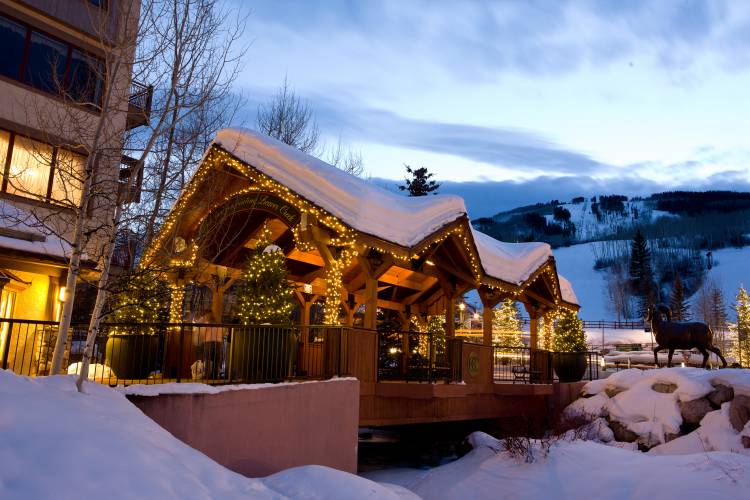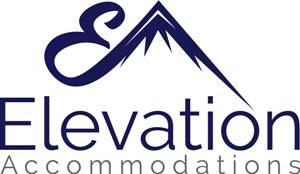Our Guide to Beaver Creek, Colorado

Beaver Creek is a hotspot for adventurers all year round. Since we are located so far into the mountains it can be hard to know the best way to get here, where to stay, and even how to deal with the higher elevation. Located near Vail and overlooking Avon, Colorado, Beaver Creek offers a blend of luxury, adventure, and natural beauty. Whether you're planning a winter ski trip or a summer getaway among the wildflowers, this guide will help you make the most of your visit to the mountains.
Transportation and getting around Beaver Creek
If you are flying to Colorado for your Beaver Creek vacation, there are two airports to choose from. The closest airport is Eagle County Regional Airport (EGE) which is about 30 miles from Beaver Creek, and provides numerous flight options from major cities, including a nice selection of nonstop flights during peak summer and peak winter season. A little farther away is Denver International Airport (DEN) which is about a 3-hour drive.
Our concierge team can help you arrange transportation from the airport to your vacation rental.
Now that you have made it to Beaver Creek, how do you get around? Beaver Creek has a complimentary shuttle service, which is a great option for getting back up the hill after an amazing dinner or an afternoon of adventuring.
Learn more about the options on our transportation page.
What about weather and high altitude?
Beaver Creek rests at an elevation of 8,100 feet at the base, with its summits soaring above 11,400 feet. The high alpine setting delivers not only prime conditions for winter sports but also breathtaking views year-round. During winter, temperatures typically range from 10°F to 35°F, offering crisp, powder-perfect days for skiing and snowboarding. In summer, mild mountain weather between 55°F and 75°F makes it an inviting destination for hiking, biking, and golfing. Because of the elevation, visitors may feel the effects of altitude, so it’s best to acclimate gradually, drink plenty of water, and take it easy the first day. Once you arrive, you can eat foods that are high in carbohydrates, drink more water, and reduce your sodium intake. It is highly recommended that you reduce your alcohol intake as well as your caffeine and salty foods. The air in the mountains is also very dry so be sure to drink lots of water.
Altitude sickness can be minor, but it can also quickly turn for the worse. Try not to push yourself, and if you feel worse, listen to your body. One of the best recommendations we have, if you are feeling unwell and don’t seem to be getting better, is to drive down to Denver. Denver sits at a lower altitude than Beaver Creek and it will help relieve some of the effects of altitude sickness.
There are also risks of being closer to the sun. The thinner air that goes along with higher altitudes causes the sun to be more intense. This means a higher chance of sunburns, “cold sores” and snow blindness. Protective cream can help with sunburn, and goggles or sunglasses can help protect your eyes. “Cold Sores” can be prevented by a medication that your doctor can prescribe before you go.
While venturing up into the mountains does come with some risk to those not used to being at such high altitudes, that shouldn’t stop you from seeing the magnificent mountains. Trust us when we say, you won’t regret it.
Outdoor adventures & activities
Beaver Creek offers year-round adventure and charm. In winter, it becomes a snow-covered paradise for skiing, snowboarding, and ice skating, with perfectly groomed trails suited for every level. When the snow melts, the mountain shifts into a summer playground featuring hiking, mountain biking, river rafting, fly fishing, golfing, and scenic chairlift rides. The resort also shines as a cultural hub, with art galleries, live concerts, and performances at the renowned Vilar Performing Arts Center. Signature events like the Birds of Prey World Cup and Talons Challenge round out the your vibrant mountain getaway. Discover thrilling winter and summer activities with our WINTER GUIDE and SUMMER GUIDE.
Are all the restaurants fancy?
Beaver Creek offers a diverse culinary scene that caters to every taste. For an elegant evening, Mirabelle delights guests with refined, gourmet cuisine in a charming chalet setting. At Hooked, seafood lovers will be impressed — all of their fish arrives by plane within 24 hours of being pulled from the ocean. For a more relaxed meal, The Dusty Boot serves hearty mountain fare in a laid-back, welcoming atmosphere. And for an unforgettable alpine adventure, take an open-air sleigh ride to Beano’s Cabin, where elevated fine dining meets rustic mountain charm—a truly signature Beaver Creek experience. If you would like to explore dining options at Bachelor Gulch, visit our Dining Guide for Bachelor Gulch visitors.
Explore the four seasons that Beaver Creek offers
Beaver Creek is a true year-round mountain escape, with each season bringing its own distinct appeal. Winter (December–March) delivers peak ski conditions, world-class snow sports, and a lively alpine atmosphere. Find the best time to visit Beaver Creek based on your preferences. As the snow melts, summer (June–September) transforms the resort into a haven for hiking, mountain biking, and outdoor adventure, with warm days and endless mountain views. Autumn (September–November) brings vibrant foliage and peaceful trails, ideal for a quiet getaway with fewer visitors. Spring offers a tranquil, value-friendly time to visit, but you can expect restaurant and shops to have limited hours of operation, paired with unpredictable weather. They say that if you don't like the weather in Colorado, wait ten minutes and it will change.
